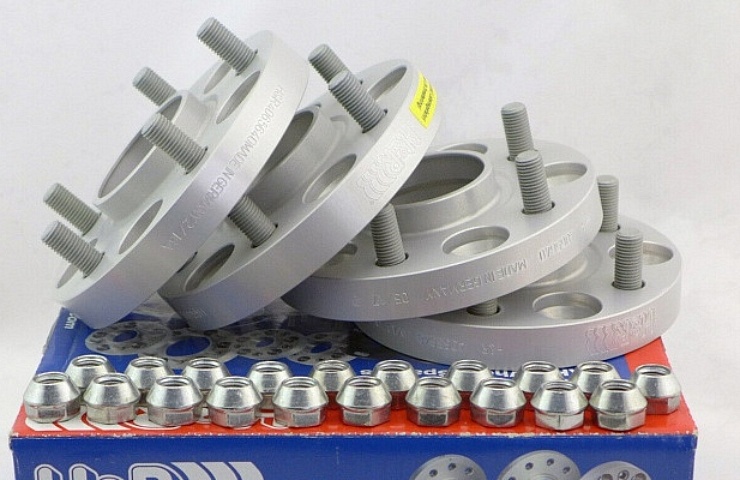Wheel spacers give your car a wider stance by moving the tire wider in the car’s track. Besides making your vehicle look cooler, a wheel spacer increases the vehicle’s grip through twisty roads. But what are wheel spacer pros and cons?
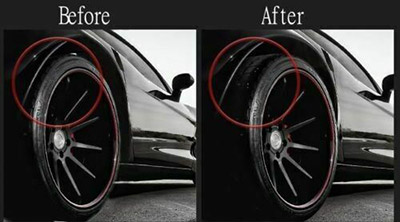
Adding wheel spacers is a relatively simple and affordable way to try out a different tire setup. A good set of four billet aluminum spacers will probably cost between $75 and $150 depending on its design.
It’s essential to consider the tire’s clearance within the fender wells. You should also ensure that a wider tire position doesn’t adversely affect the car’s turning through corners.
Sometimes spacers are also used when installing new rims because they add clearance for your existing brakes.
Two Types of Wheel Spacers
Slip-on wheel spacers for small to medium widths.
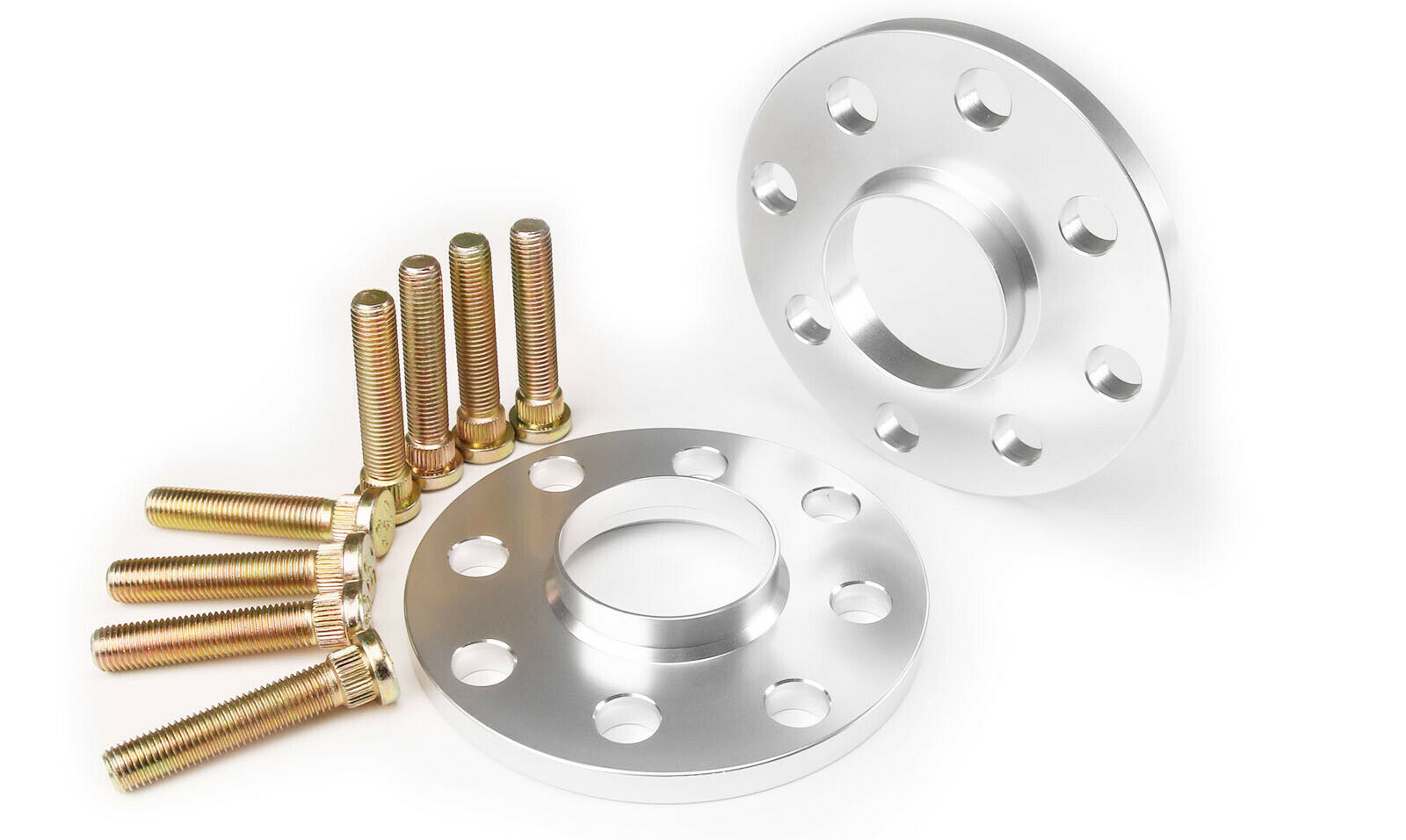
A slip-on wheel spacer that is hub-centric will mate securely to the existing hub.
A slip-on is a thin disc with drilled holes for the original wheel studs to slip through. Think of a washer with four or more holes drilled for the studs. The slip-on is usually not thicker than about a half-inch. With thicker spacers, you run the risk that the lug nuts will not have enough clamping force.
When that happens, there might be wheel shake and potential failure. When using a thicker slip on, you might need to use longer wheel studs or stud extenders. It may take an extra hour of work to replace the studs, but it’s a safer and more permanent solution
Bolt-on spacers for an even wider stance.
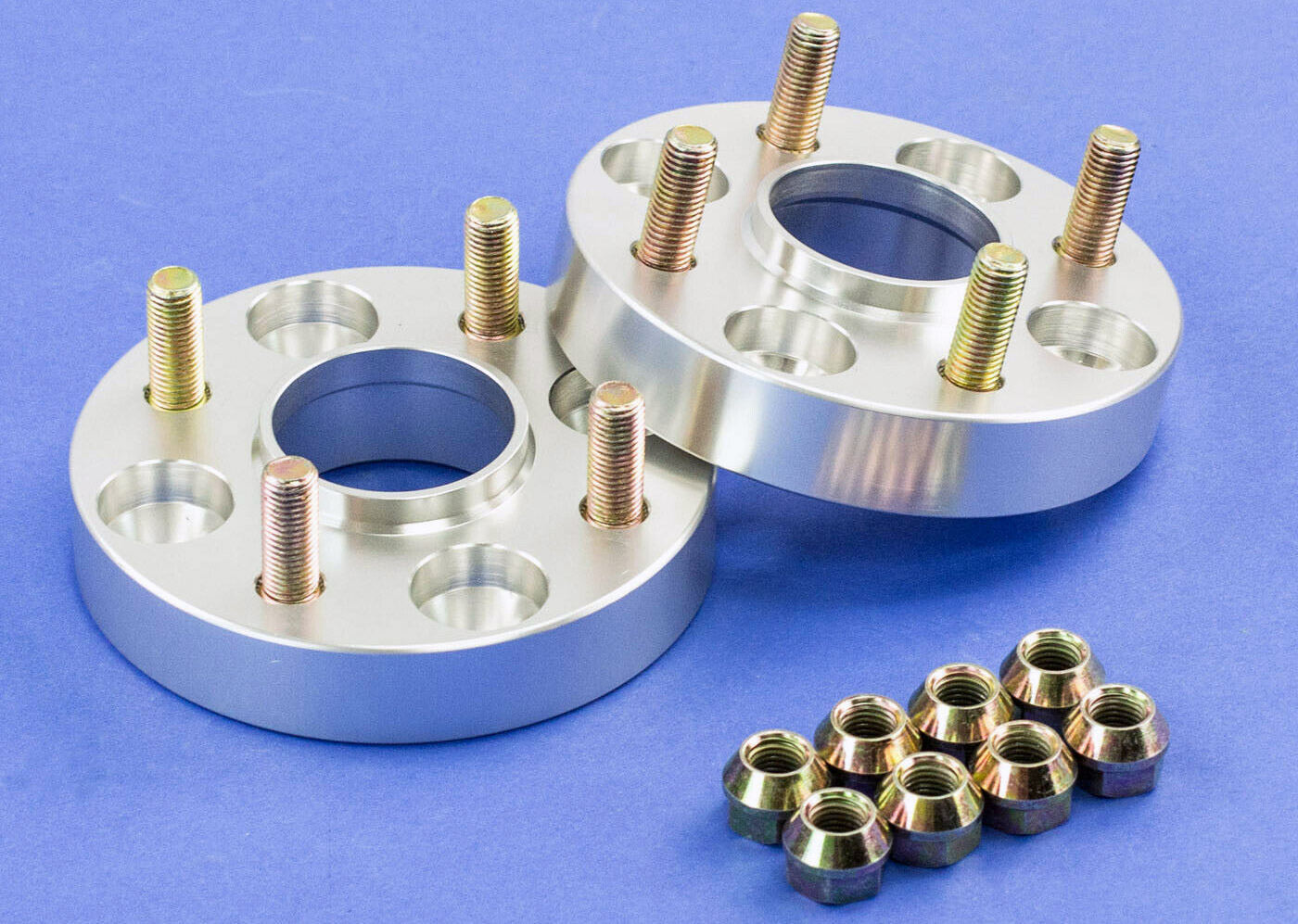
With a hub-centric bolt on wheel spacer, it will have a prominent lip as part of the design.
Bolt-on spacers add length to the existing studs that hold the wheel in place. Since this style hides the original studs and lug nuts, you should apply enough torque to the lug nuts to meet the correct specifications.
Most companies indicate around 100 foot-pounds of torque but check the owner’s manual or the vehicle manufacturer’s website for details. And read up on the best practices for using a torque wrench.
Bolt-on spacers can add two or more inches of width. Trucks often need these wider wheel spacers.
Hub Considerations
A wheel is positioned on the spindle’s hub, so the car’s weight is carried in the wheel’s center. It’s important to understand that there are two types of mountings, with implications for wheel spacer pros and cons:
- A hub-centric design means the wheel fits snugly against the hub to provide support. If the hole in the center of the wheel fits snugly against the hub, then it’s hub-centric. Nearly all factory wheels are hub-centric.
- In a lug-centric mounting, it’s the wheel lugs that center and support the wheel without support from the hub. If there’s a gap between the center hole and the hub, then it is lug-centric. Most aftermarket wheels are lug-centric design because wheels with a larger center-bore diameter can fit a wider range of vehicles.
The goal is to create a snug fit of the wheel even with spacers. That’s why many experts recommend a hub-centric spacer, especially with thicker designs.
Hub-centric spacers are designed for the center opening of the spacer to be a perfect match to the vehicle. In other words, they allow the spacer to be centered on the vehicle’s hub, which is the most accurate and secure way to center the wheel. A hub-centric wheel adapter can sometimes achieve the same goal.
Wheel Spacer Pros and Cons
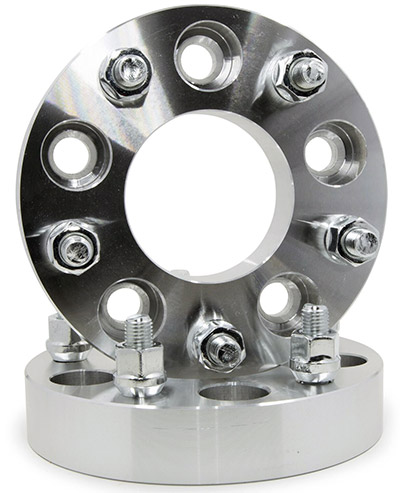
The spacing for the studs is irregular.
We discussed the pros of wheel spacers for a vehicle’s appearance and for adding tire grip. But keep in mind that a wheel spacer changes the car’s geometry and suspension—as initially designed by the vehicle’s engineers. With that adjustment, you run the risk of creating a stiffer ride or premature wearing of suspension components.
Here are a few other considerations:
- Spacers should be used on all four wheels to achieve the same width. If you increase the track of only the rear or only the front wheels, only one set of tires will have a better grip. If it’s done only in the rear, it could result in understeer. It’s potentially worse only to apply spacer to the front. It could make your car prone to losing traction and fishtailing.
- If you decide to go with longer bolt-on studs, adding the wheel spacers will take more time. Also, when you’re done, we highly recommend that you get your tires realigned.
- If you plan to race your car, be aware that some tracks will not allow wheel spacers. You’ll fail your tech inspection. Learn more here: Taking Your Car to the Track: The Ultimate Guide.
- If you get into an accident, an insurance adjuster could notice the wheel spacers. Depending on the accident’s circumstances and a policy’s fine print, an insurance company might disallow the claim. It’s a good idea to check with your insurance company before installing the wheel spacers.

